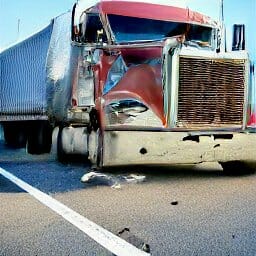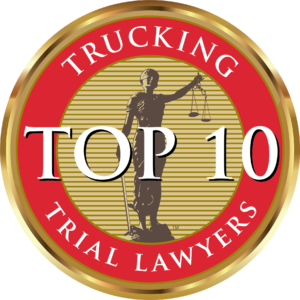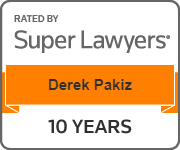
Truck accidents can happen in many ways unfortunately.
Accidents between two trucks, a truck and a passenger car, a truck and a parked vehicle, a truck and a stationary object or animal, or between no other vehicles.
Regardless of the vehicles involved, commercial trucks are large and heavy and they can cause significant property damage and serious or fatal injuries.
What are The Types Of Truck Accidents To Be Aware Of?
Drivers tend to typically play a role in truck accidents. Some of the most frequent reasons for fatal head-on collisions or rear-end collisions with trucks are as follows:
Rear-end Collisions
4,136 individuals were killed in truck collisions in 2018. 119 of them were passengers in rear-ending automobiles.
These rear-end truck accidents have increased by almost a third since reaching an all-time low in 2009, even though truck brakes have gotten better.
These mishaps occur when the front bumper of truck slams against the back of car . Rear-end collisions can be caused by a driver’s distraction, alcohol, poor road conditions, bad weather, and other circumstances.
Frontal Collisions
When two cars go in opposing directions and collide, it is called a head-on or frontal collision. The front of each vehicle is where the collision occurs.
Even though they only account for a small portion of all traffic accidents in the United States, these collisions with trucks are among the deadliest because the forces they exert on the vehicles’ occupants can result in catastrophic injuries.
Two-way Road Passing Accident
On rural, two-lane roads, passing maneuver crashes, where one car tries to pass a slower vehicle moving ahead in the same direction, are a significant safety concern.
A proper passing sight distance is essential in this situation since the hazard is primarily caused by the passing vehicle using the opposing travel lane.
Cars passing trucks and hitting another truck are the most deadliest. Second most deadliest is a truck passing another truck, and hitting an oncoming truck.
Multi-lane Road Passing Accident
All multi-lane roadways in the US have lane limitations. The non-merging vehicle may share some responsibility for the collision if it fails. Typical mistakes made by the non-merging driver include:
- Failing to reduce the pace to allow the driver who is merging to enter the traffic lane
- Failing to reduce speed
- Intentionally increasing speed to prevent the merging driver from entering the travel lane
- Pursuing the car in front so closely that the motorist who is merging cannot enter the lane
- One-way road accident
Truck Losing A Load (Unsecured Load) Accident
To keep all motorists safe, the FMCSA regulations also establish stringent guidelines for cargo security. Commercial trucks must securely fasten their cargo to prevent shifting or to fall off.
Various tools, such as straps, chains, bars, and dunnage bags, which expand to fill the spaces between objects, must be used to secure goods on the truck, depending on the type of cargo.
Accidents involving unsecured loads can be caused by a variety of circumstances, such as:
- Not using the right tools when loading and securing goods
- Using damaged or broken equipment
- Overloading a truck with cargo
- Failing to inspect the cargo
These loads falling off fully or partially can cause massive damage to any cars following behind. Of course, even once the load is stopped on the road, it can present a hazard.
Blind Spot Accidents
Before changing lanes, every truck driver will lookin their mirror, which frequently has blind spot mirrors . Some car drivers choose not to check their blind areas however, or have inadequate mirrors. When changing lanes, motorists may also not use their turn signals.
Typically truck drivers aren’t responsible for blind spot accidents due to their training, but occasionally they are.
Common causes of blind spot accidents include:
- Ignoring the need to leave ample space for lane changes
- Failing to look for blind spots before making a lane change
- Swerving into a different lane as a result of a distraction
- Not using a turn signal before a lane change
Pile-up Accidents
A chain reaction accident involves a pile-up. Due to the involvement of numerous trucks, these incidents are typically the most dangerous.
Especially if there is ice or fog limiting traction and visibility. In these cases, drivers are often too late to react and end up in the pile-up.
The worst case scenario is being in a small passenger car and being sandwiched between two larger trucks, or being a pedestrian and being hit by a moving vehicle. Be very careful when exiting your car or truck after an accident!
Jackknife Accidents
Semi-trucks or other vehicles pulling trailers can fold on themselves at a 90-degree angle. These are called jackknife accidents because the trailer swings into the vehicle pulling, the way a closing pocket knife does.
Usually incorrect braking techniques or steering inputs cause these accidents. Poor maintenance can also cause issues.
Trucks can engage the brakes on their trailers separately from their truck or tractor, but sometimes this option is too late and cannot straighten out the trailer before it goes sideways.
Jackknifing can also describe semi-trailer accidents that occur when the towing tractor is turned such that it faces the other direction, even if the trailer didn’t deviate from the original path of the vehicle.
Exploding Tire Accidents
No matter the kind of vehicle, exploding tires are deadly. Tire blowouts on 18-wheelers or other commercial vehicles pose a particularly great threat to motorists.
Tire blowouts on farming tractors, or airplanes for instance pose less risk since there is typically no one else around that can be impacted by debris.
When a large truck’s tires blow out, it can cause it to suddenly go off the road or spring out of control, potentially hitting nearby vehicles.
Wide Turn Accidents
When a semi-truck driver attempts to make a right or left turn, a “wide turn accident” may happen if a vehicle is in one of its pinch points.
They can also happen if a passenger car driver fails to see a trucker’s turn lights and accelerates into the path of the big truck.
This kind of collision frequently occurs when a trucker fails to see a car in the left lane or fails to allow enough room for a car in the right lane. The truck then tries to turn, squeezing the automobile between it and the curb.
T-bone / Side Impact Accidents
When the front of one vehicle strikes the side of another, the result is a T-bone accident, also referred to as a side-impact accident.
A truck t-boning a car is one of the worst accidents possible. Whiplash and head injuries are frequently linked to this, though various other serious and deadly injuries are also common when trucks are involved.
Sideswipe Accidents
A sideswipe accident occurs when two vehicles’ sides collide while moving in the same or the opposite direction.
One of the contributing factors to these collisions is that one car is in the other’s “blind spot,” which prevents the vehicle farther in front from seeing the one approaching from the side.
Sideswipe accidents typically are less serious due to the deflected nature of the crash force’s energy, however with a truck all bets are off and a truck and it’s trailer can cause significant damage and injury to a smaller vehicle.
Red Light Accidents
Every year in the United States, drivers collide with other motor vehicles in tens of thousands of red light automobile accidents due to failure to stop at a stop sign or red light.
Bicyclists, pedestrians, and occupants of other vehicles hit by the red light runners made up half of those killed.
Truck drivers are rarely killed and don’t run many red lights (at least not intentionally), however if they do then whoever is in their path is likely to face a serious impact from the accident.
Rental Truck Accidents
Accidents involving rental trucks can be exceedingly dangerous if the driver is not used to driving that class of vehicle, even if legally they are allowed to drive it. Think U-Haul and Penske box trucks.
Compared to a typical car, these trucks handle differently, are much bigger and more difficult to control and take longer to stop.
Moreover, when driving, there is no rear view mirror! If the truck is completely packed, there may also be weight distribution problems. This can be exacerbated by towing a personal vehicle or other trailer behind the rental truck.
Slippery Road Accidents
There are several weather conditions that, if not handled properly, can be dangerous or even fatal to truck drivers and other vehicles.
Commercial vehicles and big rig truck drivers must drive more cautiously, especially in bad weather with icy roads (or even wet roads)
Slippery roads frequently play a significant role in traffic accidents since truck drivers are unlikely to install tire chains at the first sign of snow.
Frequently Asked Questions
Here are some commonly asked questions about truck accidents in the United States, relating to truck drivers and other corresponding parties:
When is a company liable following a truck accident?
Truck drivers are frequently employed by companies that own the vehicles and plan their routes. Even if the company did not commit any negligence, the company might be held liable for the truck driver’s actions.
In other cases, the company that owns the truck may face direct liability due to a truck accident or large vehicle crash.
For example, if a company hires drivers with a history of dangerous driving behaviors, the company may be held liable for negligent hiring practices.
What is the typical semi-truck accident settlement?
There is no such thing as an “average” settlement amount for a semi-truck accident. Settlement amounts can vary greatly depending on the victim’s physical and emotional injuries, and the financial harm suffered.
Medical expenses, lost wages, lost earning potential, pain, and suffering, and a settlement may cover other losses.
If you or a loved one has been wounded or killed in a truck accident, every day without you filing a claim weakens your right to compensation.
Contact our highly experienced truck accident lawyers for a free case evaluation by calling (800) 644-8000 or completing our online contact form.
Truck Accident Statistics
More than 13% of all fatal crashes on U.S. highways involve at least one large commercial truck or bus, although heavy commercial trucks constitute less than 5% of all registered vehicles in the United States.
- There are 273,602,100 registered vehicles in the U.S., 13,233,910 of which are large commercial trucks.
- Driver distraction was involved in 6% of truck crashes, with cell phone use accounting for 16%.
- Speed played a role in 17% of truck accidents involving at least one heavy truck occupant fatality.
- A fatal crash involving a heavy vehicle occurred 4,842 times in 2020, a 4% decrease from 2019 but a 33% increase since 2011.
- Occupants suffered in truck rollover accidents at 48%, compared to only 22% of vehicle occupants.










